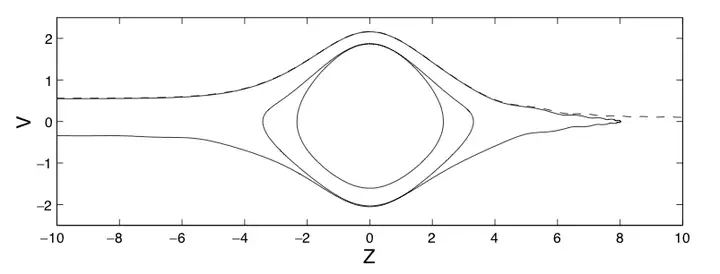
Abstract
We consider the interaction of a nonlinear Schrödinger soliton with a spatially localized (point) defect in the medium through which it travels. Using numerical simulations, we find parameter regimes under which the soliton may be reflected, transmitted, or captured by the defect. We propose a mechanism of resonant energy transfer to a nonlinear standing wave mode supported by the defect. Extending Forinash et al. [Phys. Rev. E 49 (1994) 3400], we then derive a finite-dimensional model for the interaction of the soliton with the defect via a collective coordinates method. The resulting system is a three degree-of-freedom Hamiltonian with an additional conserved quantity. We study this system both numerically and using the tools of dynamical systems theory, and find that it exhibits a variety of interesting behaviors, largely determined by the structures of stable and unstable manifolds of special classes of periodic orbits. We use this geometrical understanding to interpret the simulations of the finite-dimensional model, compare them with the nonlinear Schrödinger simulations, and comment on differences due to the finite-dimensional ansatz.